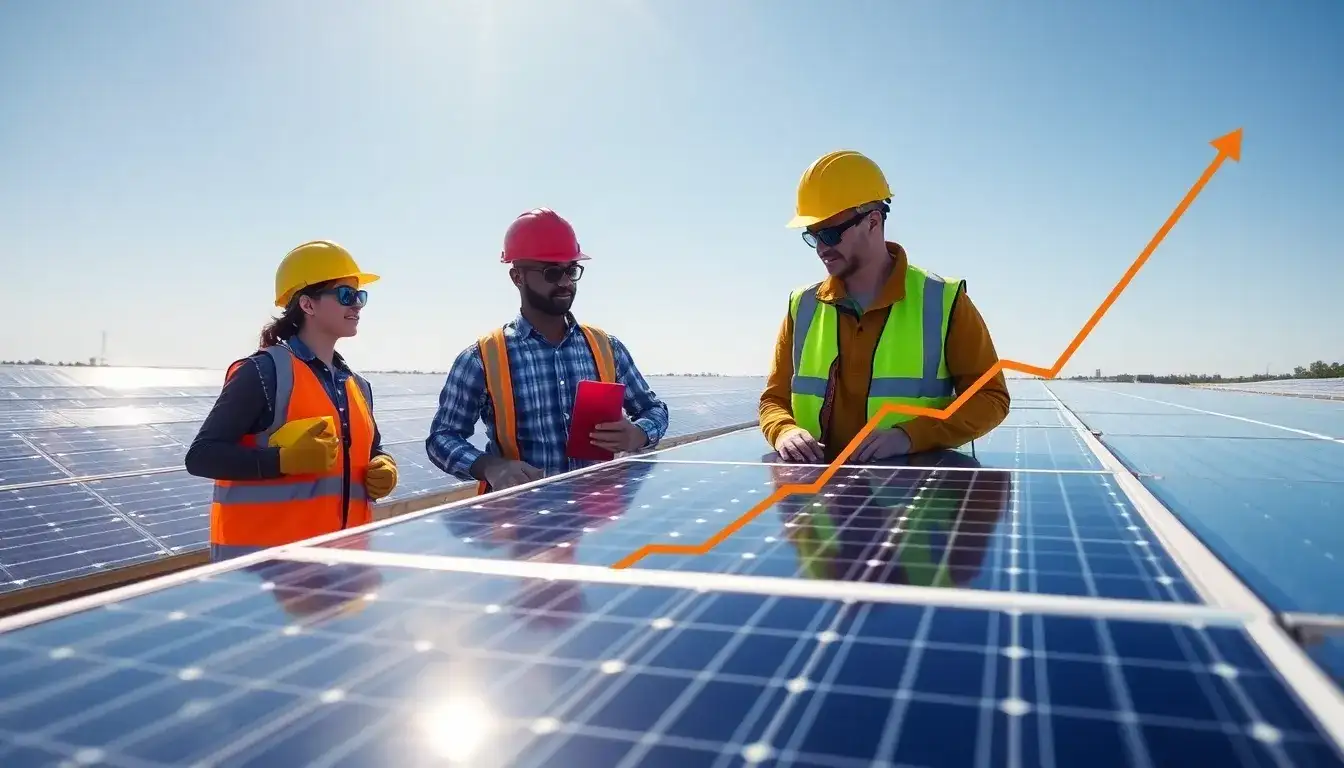
The photovoltaic industry is showing signs of recovery. Since hitting a low point in the second half of last year, prices for products such as crystalline silicon photovoltaic modules and photovoltaic-grade polysilicon have rebounded to varying degrees.
According to Ding Zhenyu, a senior investment advisor at Shaanxi Jufeng Investment Consulting Co., in an interview with The Securities Daily, “On the demand side, there has been a surge in distributed photovoltaic projects driven by a domestic ‘installation rush’, combined with a recovery in overseas markets, which has collectively boosted market demand. On the supply side, leading companies are proactively controlling production capacity, while some second-tier enterprises are depleting their inventories of previously low-priced products. The interplay of supply and demand has driven up prices in the photovoltaic industry chain.”
Is this related to the “installation rush”? Data shows that crystalline silicon photovoltaic module prices reached a low of $0.07 per watt in December last year and maintained this price in January and February of this year. However, in March, prices rebounded to $0.08 per watt. Photovoltaic-grade polysilicon increased from a low of $4.36 per kilogram in July of last year to a latest price of $5.04 per kilogram on March 19.
“After the Spring Festival, many photovoltaic product prices have risen, especially for modules. Recent market trends indicate that some leading manufacturers have continued to raise their module prices, particularly for high-efficiency modules, which are in high demand,” said Huang Tian, an industry professional.
There is a general consensus in the industry that the price increase in the photovoltaic industry chain is related to the “installation rush.” In January of this year, the Management Measures for the Development and Construction of Distributed Photovoltaic Power Generation were released, which stipulate that distributed photovoltaic projects that were registered before this announcement and are expected to be operational by May 1, 2025, will still be subject to the original policies. In February, the National Development and Reform Commission issued a notice that clarified that the electricity generated by renewable energy projects (including wind and solar) would primarily enter the electricity market, with prices determined through market transactions. Existing and new projects will be categorized for policy measures, with June 1, 2025, serving as a dividing line.
The implementation of these policies means that April 30 will be a critical deadline for adjusting grid access methods and electricity prices for commercial and industrial distributed photovoltaic projects, while May 31 will mark the full market entry of new projects. To capitalize on the benefits of existing policies, many companies are rushing to install projects before these deadlines, significantly increasing demand for photovoltaic products.
Simultaneously, a gradual recovery in overseas markets is also contributing to the price increase of photovoltaic products. A report released by Guohai Securities in February indicated that on February 11, European photovoltaic module prices rebounded for the first time after several months of decline.
Additionally, industry self-regulation is starting to show results. In October of last year, the China Photovoltaic Industry Association hosted a meeting where several companies in the photovoltaic industry chain signed a self-regulation agreement to manage production capacity, which has become an important factor in driving prices upward.
The rebound in photovoltaic product prices has positively impacted several listed companies. Recently, many A-share listed companies in the photovoltaic industry chain responded to investor inquiries on trading platforms. A representative from Suzhou KuaiKe Photovoltaic Electronics Co., Ltd. stated that the prices of the company’s main products are positively correlated with downstream module prices, and the increase in market demand is beneficial for their product sales. A representative from TCL Zhonghuan New Energy Technology Co., Ltd. mentioned that by the end of the fourth quarter of 2024, wafer prices are expected to stabilize and rise gradually, and the company will focus on efficiency improvements and innovation to enhance global competitiveness.
The future price trend is receiving market attention. Chen Tianlang, an analyst at TrendForce, indicated that “in April, demand for battery cells will continue to be strong. The order visibility for module manufacturers has improved significantly, and production volumes are expected to increase further.”
However, as the “installation rush” ends, demand is expected to shift. “Once the rush to install projects concludes, market demand for photovoltaic products may decline, and the supply-demand tightness could ease. The industry will likely return to its main logic of ‘enhancing quality, reducing costs, and increasing efficiency,’ and companies will need to continue building technological and cost advantages while the competitive landscape of the industry continues to optimize,” Ding Zhenyu noted.
Zheng Lei, chief economist at Samoyed Cloud Technology Group, stated in an interview with The Securities Daily that “in the segments of the photovoltaic industry chain such as polysilicon, wafers, battery cells, and modules, China has established a dominant position globally. In the future, companies need to focus on R&D innovation and technological upgrades to further reduce the cost of photovoltaic power generation, making it more competitive and solidifying China’s advantages in the photovoltaic industry.”







